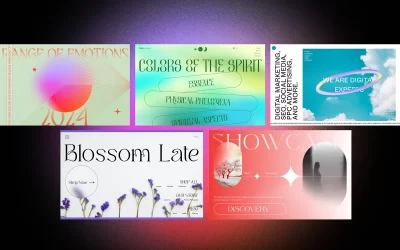Think about how you work with your clients financially.
When you’re crafting a business, understanding your payment structures is the beat of your business. It’s the pulse, the rhythm that keeps everything moving.
I was a commercial photographer, so I did a job, put together a bill, and sent it out. Waiting for payment was always a part of the ‘game’.
I always bid on jobs based on the expectation of a single payment being met by the client.
(An aside, have you ever noticed all photo bids come in with round numbers? This job is $2000, that job is $4000. Never was a job $3,572.67. The bill may have ended up like that, but not the bid. Anyway, off-topic. Sorry.)
Today I use single payment, payments over terms, and retainers.
I wonder how many other jobs I could have done if I had offered the client three months to pay instead of a single payment. I imagine more than a few.
As we move into new models of work, service, and offerings, I think it is very important to consider other forms of payment we could use in the creative fields.
Let’s dissect some of the possible ways we can work with our clients.
1. Billing Per Job
Pros:
-
Clarity. They know exactly what they’re paying for. It’s straightforward.
-
Flexibility. Especially for clients who don’t need consistent work.
-
Motivation. It provides a sense of urgency to get the job done.
Cons:
-
Unpredictability. Cash flow can be irregular, making financial forecasting trickier.
-
Administrative Burden. More invoices. More paperwork. More admin.
2. Retainer
Pros:
-
Stability. Regular income makes financial planning smoother.
-
Client Loyalty. A sense of partnership and commitment.
-
Predictability. Both parties know what’s expected and when.
Cons:
-
Complacency Risk. It’s easy to take a retainer client for granted. Stay on your toes!
-
Tied Down. Might limit your capacity to take on new projects or clients.
3. Subscription Model
Pros:
-
Recurring Revenue. Ah, the magic of knowing you have a certain amount coming in.
-
Scalability. Especially with digital products or services.
-
Client Engagement. Regular interactions can mean deeper relationships.
Cons:
-
Churn. The bane of subscriptions. People drop off, affecting your income.
-
Value Justification. You’ve got to consistently prove your worth to avoid that churn.
4. Traditional 30 Days
Pros:
-
Standard Practice. Many businesses are accustomed to this model.
-
Cash Flow Management. You know when the money’s coming.
Cons:
-
Waiting. Cash can be tied up, which may affect operations.
-
Risk of Default. The longer the wait, the higher the risk of non-payment.
Now, for the creatives out there, there are a few more nuanced models you might consider:
5. Value-Based Pricing Instead of charging by the hour or project, charge based on the value delivered. If your design increases a company’s sales by $100,000, isn’t that worth more than just a flat fee?
Pros:
-
Maximized Earnings. You’re rewarded for effectiveness, not just effort.
-
Aligned Goals. Both parties want maximum value.
Cons:
-
Perception Battle. Convincing clients can be tricky.
-
Risk of Undervaluation. If not communicated well, you might sell yourself short.
6. Sliding Scale Adjust your fee based on the client’s size or budget.
Pros:
-
Flexibility. Can cater to a range of clients.
-
Fairness. Allows you to work with both startups and giants.
Cons:
-
Complexity. Can be challenging to manage.
-
Value Perception. Some might question why they pay more than others.
Remember, the model you choose should resonate with your mission, the kind of clients you’re after, and the value you bring to the table.
It’s about making a business model ruckus, in the right way.
The game is to get paid and do it while making a difference and enjoying the work.
Let me know if you have tried any of these different pricing models, and what you have found works for you.
If you are ready, here are a few ways I may be able to help.
I have group mentorship and coaching sessions for photographers looking for a sense of community with supportive and successful creatives who love to share and learn.
My one-on-one coaching is guaranteed to get you going and landing more jobs. Designed especially for those who have hit a wall at $30-$50K, this coaching will pay for itself in the first 60 days.
The Creative Class is an intensive and deep look into how adding skills to your services can increase your income by providing more channels for client interaction.
ASSIGNMENT TWO: SPORTS DRINK
ASSIGNMENT TWO: SPORTS DRINKCREATIVE CLASS: ASSIGNMENTS TO HELP CONSTRUCT A POWERFUL PORTFOLIOSPORTS DRINKS: ASSIGNMENT TWO SPORTS DRINKS can be boring or totally cool - it's up to you. All the rage and a multi-billion dollar business. And so many terrible ads… sigh....
LEARNING FIGMA: PREMADE LAYOUTS TO LEARN FROM
Learning New Tools Figma is an important design tool for all of us to be aware of. I am currently learning two new software programs to help me with my graphic and web design arm of the business. Figma and Webflow. If you are thinking about working with Figma, here...
TEACH YOURSELF GRAPHIC DESIGN
FREE CREATIVE CLASS MODULE THREE
FREE MODULE THREE: TABLETOP PHOTOGRAPHYSHOOTING PRODUCT, FOOD, AND PACKAGINGMODULE THREE: TABLETOP AND PRODUCT PHOTOGRAPHYSTUNNING STILL-LIFE PHOTOGRAPHY IS SIMPLY EXPECTED IN THIS MARKET In a world increasingly driven by visuals, the importance of creative still-life...
TWO VIDEOS ON CREATIVE USE OF AI
TWO VIDEOS ON USING GENERATIVE AI I know some of you are not that into AI, but my view is that it is here, and you will be up against those who do use it. What you choose to do is up to you, but this is the future. If we do not learn to work with, it may be a...
FREE MODULE TWO: ADDING TO YOUR SKILLSET
FREE MODULE TWO: ADDING TO YOUR SKILLSETTHE BUSINESS CASE FOR ADDING NEW SKILLSMODULE TWO: THE BUSINESS CASETHE BUSINESS CASE FOR ADDING SKILLS Here's the real deal, folks. We're in a dynamic, evolving industry. Gone are the days when a photographer could just show...





